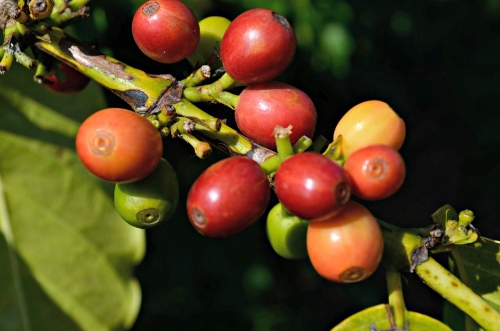Discover Coffee Fruit, Nature’s Wasted Superfood
Photo courtesy of KonaRedBlueberries. Pomegranates. Oranges. Pineapples. All easy-to-buy fruits we know are good for us. But what if we told you one of nature’s healthiest foods was something farmers typically used for compost—or even completely threw away as trash?
Coffee is one healthy vice. Along with keeping you from drooling all over your desk mid-day, it’s low in calories, packed with antioxidants and may protect against ailments like Type 2 Diabetes, Parkinson’s and liver disease. However, the thin and juicy coating on the outside of the coffee bean does this and more. A true superfood packed with antioxidants—due to the uber-concentrated polyphenols—coffee fruit has the power to boost the immune system, protect against free radicals and act as an anti-inflammatory.

Jessica Festa
FutureCeuticals, creator of CoffeeBerry® and the patented process for preserving coffee fruit, have been researching the benefits of coffee fruit for over 13 years. Through analyzing how people’s bodies responded to ingesting coffee fruit, they discovered it stimulates the production of Brain Derived Neurotropic Factor (BDNF), a protein essential for maintaining healthy cognition and a host of other brain-related processes such as sleep and mood. To benefit from coffee fruit’s unique combination of phytonutrients, a person must ingest both the outer fruit and the bean—not just traditional coffee products like black coffee and green coffee bean extract.
In fact, according to Dr. Debbie Palmer, who uses coffee fruit in her Replere Skincare line, the fruit of the Coffea arabica plant is one of the world’s most powerful antioxidants.
“Coffee fruit is hand-picked on coffee farms—as it has been done for over 1,000 years—and it is known by the farmers that the fruit is rejuvenating…and those who pick it have younger looking hands,” she explains. “This is because the fruit is high in polyphenol compounds: proanthocyanidins, chlorogenic acid, quinic acid, ferulic acid and caffeic acid. The fruit has been found to be higher in antioxidants than tea, vitamin C and E, raspberries, strawberries, blueberries and pomegranate.”
Because coffee cherry skins ruin the taste of coffee, farmers have always thrown them away, putting them back into the ground to fertilize the soil.
If only you had access to acres worth of coffee plants—or at least a few products to help you savor the skins. Enter FutureCeuticals, who’ve created a line of powders and concentrates that use both the fruit and the bean. Their products aren’t just use for drinks by consumers, but also infused into energy drinks, tonics, instant coffees, enhanced waters and meal replacements by other businesses. For them, it’s not just about the drink itself, it’s about telling the whole coffee story of delivering a healthy, non-roasted “coffee as nature originally intended”: as a fruit.
